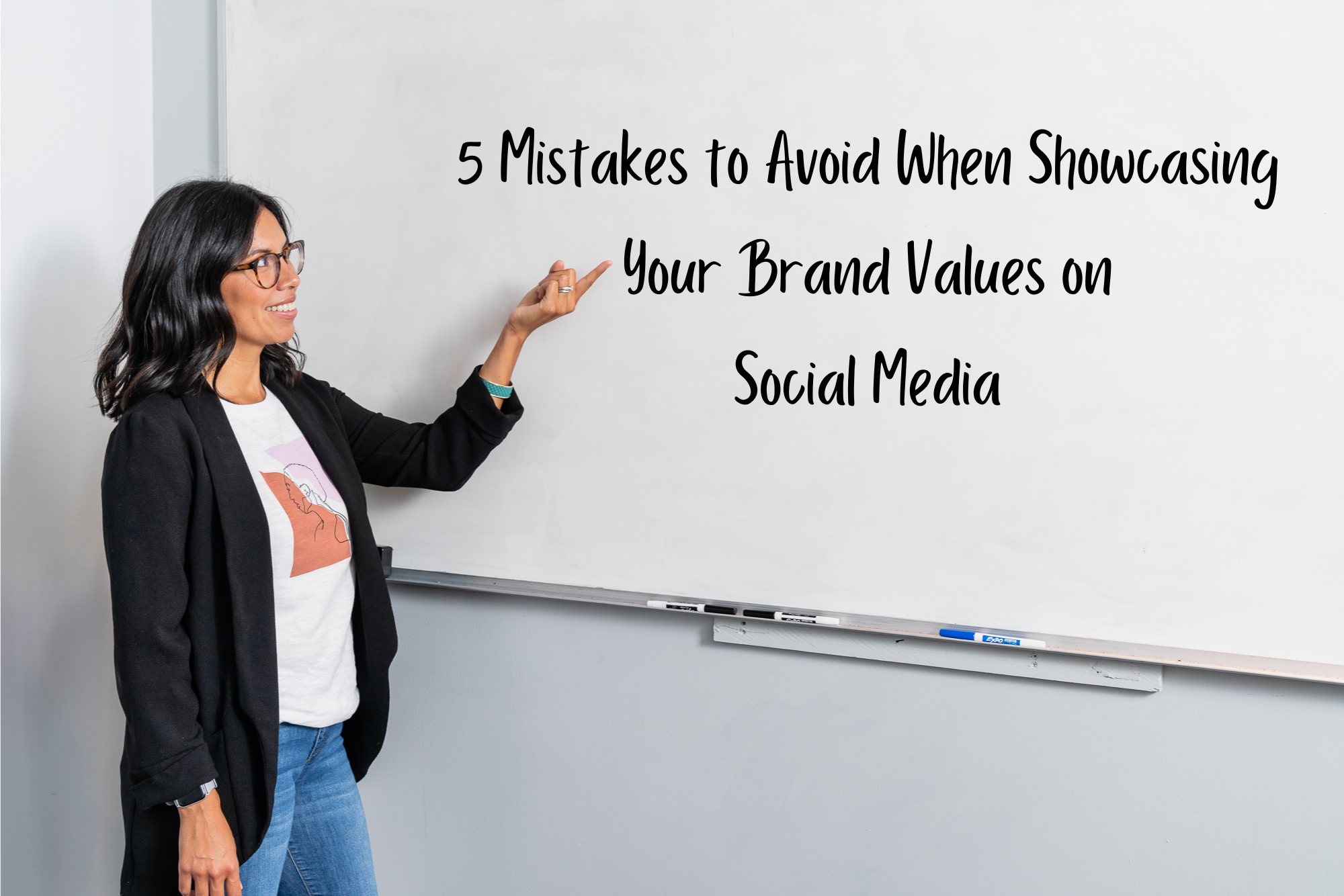5 Mistakes to Avoid When Showcasing Your Brand Values on Social Media

It can be nerve-wracking to show up on social media, let alone show up and talk about your deepest values or societal issues.
But the payoff can be huge. Research shows consumers expect brands to showcase their values on these platforms, meaning it’s an important part of standing out online. If you don’t have a strategy for showcasing your brand values on social media, it’s time to create one.
That said, there are a few things you’ll want to be wary of. Authenticity rules algorithms, and you don’t want to sacrifice connection in the name of going viral.
From “performative posting” to misaligned partnerships, keep reading for five mistakes to avoid when showcasing your brand values on social media.
1) Trying To Be Active On Too Many Platforms
Part of staying true to your brand values on social media means sticking to the platforms that feel authentic for you.
When you try to show up everywhere at once, you’re likely to feel spread thin, which means the quality of our values-driven content can suffer. It’s also harder to maintain connections and start conversations with your audience when you’re juggling too many channels.
At Drio, the only social media platform we really focus on is LinkedIn. You won’t catch us making snazzy Instagram Reels or chattering away on TikTok trying to reach a million viewers. That’s just not who we are. What matters to us is fostering a strong community where our people are hanging out—in a medium that feels good to us.
Show up on the places that feel natural, enjoyable, and strategically aligned. When you focus on that, it will be much easier to craft quality content.
2) Talking About an Issue Just Because It’s “Trending” or You Feel Pressured To Post
If you’ve spent a couple of minutes on Instagram during a major event, you’ve seen how your newsfeed can transform. Everyone from your best friend to Pepsi suddenly contributes to the same conversation.
While this type of content can help amplify awareness for important causes, it can also result in a whole lot of virtue signaling. So, how should you handle content about current events or social issues?
It usually boils down to being vocal about specific issues your brand has a genuine stance on. After all, people can sense if your brand only posts about an issue because it’s trending.
When posting about an issue, ask yourself why you’re doing that.
- Is it to gain followers?
- Is it because you feel like you should prove that you care?
- Is it because you care about it in your heart?
- Is it because you want your audience to learn from your expertise?
Always make sure you have a thorough knowledge of the cause before posting. And remember that you don’t need to post about every issue if it isn’t a core part of your brand’s communications. We recommend creating a set of guidelines to help you and your team navigate content about current events.
3) Partnering With Mis-Aligned Influencers or Brands
Partnering with another account with a big following isn’t worth it if it goes against your brand’s values. That’s because who you hang out with says just as much as the words you post online.
Whether running an influencer marketing campaign or doing a collaboration post with another brand, make sure you’re crystal clear on what they stand for. Accidentally (or purposefully) aligning yourself with a brand that clashes with your values can hurt your credibility and trust.
For example, if sustainability is one of your core values but you work with an influencer who promotes excessive consumerism or has worked with other brands with poor environmental practices, your audience will notice.
It isn’t always easy to catch misalignment if the brand or influencer did something in the past that goes against your values. However, doing background research and thoroughly analyzing their online presence goes a long way.
On a related note, let us be clear that “causing a ruckus” with a portion of the population to increase representation and uplift marginalized populations is worth it—as long as you stick by the people you’re uplifting.
Recently, brands like Bud Light and Nike faced conservative backlash when they partnered with transgender influencers. While we applaud their efforts to increase representation, Bud Lite should have better supported the influencer, Dylan Mulvaney, to publicly stand by transgender people. Nike did a better job of this.
4) Talking About Your Brand Values Too Little or Too Much
Business owners often wonder how much they should talk about their brand values.
Here’s the thing: Every single post can support your brand values in some way.
The better question is how often should you blatantly talk about social initiatives or causes you’re involved in. The answer to this will depend on the nature of your brand. For example, if you’re a charity, you’ll probably talk about social initiatives more than a web design agency.
That said, you should talk about your brand values more than you think. An audience member sees only some of what you post online. Plus, people need to see a message seven times before they take action. Repetition and finding fresh ways to showcase your values are essential.
With that in mind, you probably don’t only want to shout about the initiatives you’re involved in. Alternate those types of posts with stories, education, entertainment, and promotional posts so you don’t bore, confuse, or overwhelm your audience.
5) Ignoring Your Audience
Social media is a conversation that involves two parties: You and your audience. Part of capturing your values on social media involves listening to your people.
Whether it’s through live videos or written content, you can engage with your audience by starting conversations, asking questions, and responding to feedback (both positive and negative, as hard as that can feel).
If you don’t do that, you can miss powerful opportunities for connection and damage your sense of authenticity. For instance, if a follower responds to one of your posts with a reasonable critique or a passionate question but you ignore it, it can do more harm than good.
Long story short: Bring your audience into your circle and show them you value their voice. Social media is a collaborative platform—not a vortex for talking heads.
Free Resource: Uncover Your Brand Values
In this guide, you’ll get reflective prompts to clarify your values, templates to help put them into words, and ideas for where to showcase it all on your website.
To access the guide complete the form below:






